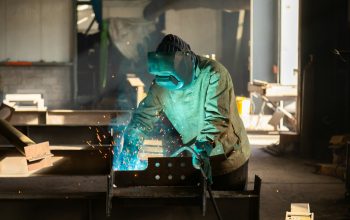Overview of June’s Industrial Trends
South Korea’s industrial production showed a notable recovery in June 2025, reversing the declining trend seen over the past two months. According to data released by Statistics Korea on the 31st, total industrial output rose by 1.2% compared to the previous month. This marks a significant rebound following decreases in April (-0.7%) and May (-1.1%).
The uptick in output was driven by growth in manufacturing, construction, services, and public administration. Compared to the same period last year, total production was up by 0.8%, with increases in manufacturing and services more than offsetting a decline in construction activity.
Manufacturing and Mining See Solid Gains
In the manufacturing sector, output increased by 1.6% month-on-month. While production of electronic components declined, this was outweighed by a surge in semiconductor and automobile manufacturing. Notably, the production of semiconductors such as DRAM and system chips rose significantly, supported by strong demand and new vehicle launches in the hydrogen car segment.
However, some weaknesses persisted. The electronic components sector, impacted by global trade uncertainties, saw production fall by 18.9%—the steepest decline since December 2008. This was attributed to reduced output of smartphone-related components like OLED displays and LCO polarising films.
The manufacturing inventory level edged up by 0.2% from the previous month but dropped 5.0% year-on-year. Average capacity utilisation in the sector rose to 72.4%, an increase of 1.0 percentage point from May.
Services Sector Rebounds on Financial and Tech Strength
Service sector production climbed by 0.5% in June, recovering from a 0.1% drop in May. This growth was supported by increased activity in finance, insurance, and professional and scientific services, despite declines in healthcare and social welfare output. Compared to a year earlier, services production advanced by 1.8%, suggesting a steady recovery in domestic demand.
Retail Sales Reflect Shifts in Consumer Spending
Retail sales rose by 0.5% month-on-month, marking the first positive reading in four months. This improvement was fuelled by a 4.1% increase in sales of semi-durable goods such as clothing, and a modest 0.3% gain in non-durable goods like cosmetics. However, demand for durable goods, including passenger vehicles and communication devices, fell by 1.6%.
Year-on-year, retail sales edged up by 0.1%, driven by stronger demand for durable goods, though sales of clothing and cosmetics declined. Among retail formats, sales increased at car dealerships and fuel stations, while supermarkets, general merchandise stores, and duty-free shops experienced declines.
Investment Shows Mixed Signals
Facility investment continued to weaken, falling by 3.7% from the previous month. While machinery investment rose by 1.7%, investment in transport equipment, particularly other vehicles, plunged by 14.8%. This marks the fourth consecutive monthly decline in facility investment since March.
Nevertheless, compared to the same period last year, overall investment rose by 2.1%, driven by increased spending in the automotive sector. According to Choi Chang-yoon, Director of Service Industry Statistics at Statistics Korea, the high base effect from February’s semiconductor machinery investment contributed to recent month-on-month volatility, but year-on-year figures reflect five straight months of growth.
Construction Sees Strongest Growth in Over a Year
Construction performance, measured by work completed, jumped 6.7% from May, the first rise in four months and the largest since January 2024. While civil engineering output dipped by 2.8%, building construction surged by 10.3%. However, on an annual basis, overall construction activity remains subdued, down 12.3%, marking the 14th consecutive month of decline. Officials cautioned against assuming a full recovery in the construction sector.
Construction orders also dropped by 13.6% year-on-year, with increases in factory and warehouse orders offset by reduced demand in railway and infrastructure projects.
Economic Indicators Offer Mixed Outlook
The coincident composite index—a key barometer of current economic conditions—fell by 0.1 points from the previous month due to weaker industrial output and domestic export data, despite gains in construction performance and imports.
In contrast, the leading composite index, which forecasts future economic trends, rose by 0.2 points. This was supported by improvements in the KOSPI stock index and the economic sentiment index, although some components, such as machinery exports and inventory turnover ratios, remained weak.
Quarterly Summary and Government Response
This month’s release also includes the second-quarter overview. The overall improvement in production and consumption points to a modest rebound in domestic demand. Analysts attribute this partially to improved consumer sentiment following the launch of the new government.
In light of these developments, the Ministry of Economy and Finance plans to accelerate the implementation of the second supplementary budget. A government official stated that stimulus measures, including consumption vouchers and efforts to boost the stock market, are expected to positively influence economic activity in the coming months. Ministries have been instructed to expedite spending and develop tailored programmes to stimulate consumption.



